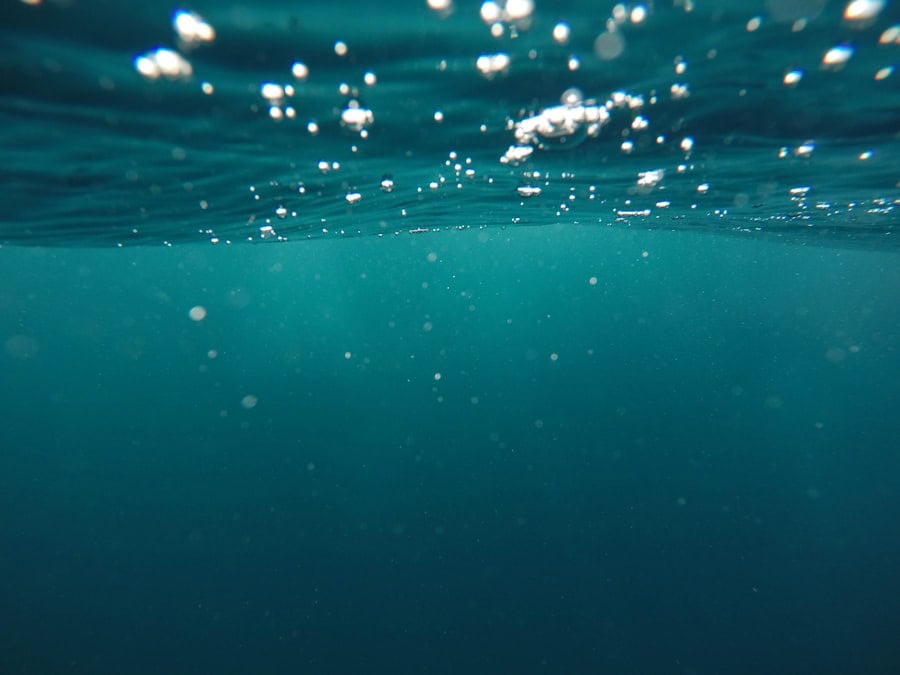Marine pollution has emerged as one of the most pressing environmental issues of our time, affecting not only the health of ocean ecosystems but also the livelihoods of millions of people who depend on the sea. The oceans, which cover over 70% of the Earth’s surface, are a vital resource, providing food, oxygen, and climate regulation. However, they are increasingly threatened by a myriad of pollutants, including plastics, chemicals, and agricultural runoff.
The sources of marine pollution are diverse, ranging from land-based activities such as industrial discharges and urban runoff to maritime operations like shipping and fishing. As human activities continue to expand, the volume and variety of pollutants entering the oceans have reached alarming levels. The consequences of marine pollution are far-reaching and complex.
Marine organisms, from the smallest plankton to the largest whales, are affected by toxic substances that disrupt their reproductive systems, growth, and overall health. Additionally, pollutants can accumulate in the food chain, leading to bioaccumulation and biomagnification, which pose significant risks to both marine life and human health. The degradation of marine environments not only threatens biodiversity but also undermines the economic stability of coastal communities that rely on fishing, tourism, and recreation.
As awareness of these issues grows, it becomes increasingly clear that urgent action is needed to address marine pollution and protect our oceans for future generations.
Key Takeaways
- Marine pollution has a significant impact on ocean ecosystems, leading to devastating consequences for marine life and the environment.
- Ocean cleanup technologies have emerged as a potential solution to address the issue of marine pollution, offering hope for the restoration of ocean health.
- Various types of ocean cleanup technologies, such as floating barriers and autonomous drones, are being developed and implemented to remove plastic and other pollutants from the ocean.
- Despite the potential of ocean cleanup technologies, there are challenges and limitations that need to be addressed, including cost, scalability, and the effectiveness of different methods.
- Collaboration and policy play a crucial role in tackling marine pollution, and the success of ocean cleanup technologies relies on the support and involvement of governments, organizations, and individuals.
The Impact of Marine Pollution on Ocean Ecosystems
The impact of marine pollution on ocean ecosystems is profound and multifaceted. One of the most visible forms of pollution is plastic waste, which has become ubiquitous in marine environments. It is estimated that over 8 million tons of plastic enter the oceans each year, leading to the formation of massive garbage patches, such as the Great Pacific Garbage Patch.
These floating islands of debris not only pose physical hazards to marine animals but also contribute to the ingestion of microplastics by various species. Sea turtles, for instance, often mistake plastic bags for jellyfish, leading to severe internal injuries or death. Moreover, microplastics can be ingested by smaller organisms like zooplankton, which are foundational to marine food webs.
Chemical pollutants also play a significant role in degrading ocean ecosystems. Heavy metals such as mercury and lead, along with persistent organic pollutants (POPs) like polychlorinated biphenyls (PCBs), can accumulate in marine organisms and disrupt endocrine systems. These chemicals can lead to reproductive failures in fish populations and contribute to declines in species such as seabirds and marine mammals.
Furthermore, nutrient runoff from agricultural practices can lead to eutrophication, a process that depletes oxygen levels in water bodies and creates dead zones where marine life cannot survive. The Gulf of Mexico’s dead zone is a stark example of this phenomenon, where excess nutrients from fertilizers have led to significant declines in fish populations and other marine life.
The Emergence of Ocean Cleanup Technologies
In response to the escalating crisis of marine pollution, innovative ocean cleanup technologies have emerged as potential solutions to mitigate the impact of waste in our seas. These technologies aim to remove existing pollutants from the ocean while also preventing future pollution through improved waste management practices. The development of these technologies has been driven by a combination of scientific research, technological advancements, and increased public awareness about the dire state of our oceans.
Organizations like The Ocean Cleanup have gained international attention for their ambitious projects aimed at cleaning up plastic waste from the ocean. The emergence of ocean cleanup technologies represents a shift in how society approaches environmental challenges. Rather than solely focusing on prevention and regulation, there is now a concerted effort to actively remove pollutants from marine environments.
This proactive approach not only addresses existing pollution but also raises awareness about the importance of sustainable practices and responsible consumption. As these technologies continue to evolve, they hold promise for restoring damaged ecosystems and fostering a healthier relationship between humanity and the oceans.
Types of Ocean Cleanup Technologies
Ocean cleanup technologies can be broadly categorized into several types based on their methods and applications. One prominent category includes passive systems that utilize natural ocean currents to collect debris.
This method relies on the natural movement of water to funnel debris into a central collection area for subsequent removal and recycling. Another category encompasses active cleanup technologies that involve mechanical systems designed to remove waste directly from the water. These systems often utilize boats equipped with nets or other collection devices to gather debris from targeted areas.
For example, organizations like Ocean Conservancy have implemented initiatives that mobilize volunteers to participate in beach cleanups while also employing specialized vessels for larger-scale operations in open waters. These active methods can be particularly effective in areas with high concentrations of debris but may require significant resources and coordination. Emerging technologies also include autonomous drones and underwater robots designed for monitoring and collecting waste in hard-to-reach areas.
These innovations leverage advancements in robotics and artificial intelligence to enhance efficiency and effectiveness in cleanup efforts. By integrating data collection capabilities with cleanup operations, these technologies can provide valuable insights into pollution patterns and inform future strategies for prevention and remediation.
Challenges and Limitations of Ocean Cleanup Technologies
Despite the promise offered by ocean cleanup technologies, several challenges and limitations hinder their widespread implementation and effectiveness. One significant challenge is the sheer scale of marine pollution; with millions of tons of plastic waste dispersed across vast oceanic regions, it is nearly impossible to remove all debris efficiently. Cleanup efforts often focus on specific areas known for high concentrations of waste, but this approach may overlook remote regions where pollution is equally problematic.
Additionally, many cleanup technologies face logistical hurdles related to deployment and maintenance. For instance, passive systems like floating barriers require regular monitoring and maintenance to ensure they remain effective over time. Harsh ocean conditions can lead to wear and tear on equipment, necessitating repairs or replacements that can be costly and time-consuming.
Furthermore, active cleanup methods often depend on human resources for operation, which can limit their scalability and sustainability. Another critical limitation is the potential ecological impact of cleanup operations themselves. The removal of debris must be conducted carefully to avoid disturbing marine habitats or inadvertently harming wildlife.
For example, nets used in active cleanup efforts can entangle marine animals or damage sensitive ecosystems like coral reefs if not managed properly. Striking a balance between effective cleanup and ecological preservation remains a significant challenge for developers of these technologies.
Success Stories and Case Studies of Ocean Cleanup Technologies
Despite the challenges faced by ocean cleanup technologies, there have been notable success stories that demonstrate their potential impact on reducing marine pollution. One such example is The Ocean Cleanup’s pilot project in the Great Pacific Garbage Patch. Launched in 2018, this initiative successfully deployed a floating barrier system designed to capture plastic debris while allowing marine life to pass beneath it unharmed.
Initial results indicated that the system was capable of collecting significant amounts of plastic waste over time, showcasing the feasibility of large-scale cleanup efforts. Another success story comes from local initiatives around the world that have mobilized communities to take action against marine pollution. In 2019, volunteers in Indonesia participated in a massive beach cleanup event organized by Ocean Conservancy, collecting thousands of pounds of plastic waste from coastal areas.
This grassroots effort not only removed debris from beaches but also raised awareness about the importance of responsible waste management practices among local populations. In addition to these projects, technological advancements have led to innovative solutions for addressing specific types of marine pollution. For instance, researchers have developed biodegradable materials designed to replace conventional plastics used in packaging and single-use items.
By reducing reliance on non-biodegradable materials, these innovations aim to prevent future pollution while complementing existing cleanup efforts.
The Future of Ocean Cleanup Technologies
The future of ocean cleanup technologies holds great promise as research continues to advance and new innovations emerge. As awareness about marine pollution grows globally, there is an increasing demand for effective solutions that can address this pressing issue comprehensively. Future developments may focus on enhancing existing technologies while also exploring novel approaches that leverage emerging fields such as biotechnology and nanotechnology.
One area ripe for exploration is the integration of artificial intelligence (AI) into cleanup operations. AI-powered systems could optimize debris collection by analyzing real-time data on ocean currents, weather patterns, and pollution hotspots. This would enable more efficient deployment of cleanup resources while minimizing ecological impacts.
Additionally, advancements in materials science may lead to the creation of more durable yet environmentally friendly materials that can withstand harsh ocean conditions without contributing further to pollution.
By pooling resources and expertise, stakeholders can develop comprehensive strategies that encompass both cleanup efforts and preventive measures aimed at reducing pollution at its source.
The Importance of Collaboration and Policy in Tackling Marine Pollution
Addressing marine pollution effectively requires a multifaceted approach that combines technological innovation with robust policy frameworks and collaborative efforts among various stakeholders. Governments play a critical role in establishing regulations that limit pollutant discharges into oceans while promoting sustainable practices across industries such as agriculture, shipping, and waste management. International cooperation is particularly vital given the transboundary nature of marine pollution; pollutants do not adhere to national borders but instead flow freely across oceans.
Treaties such as the MARPOL Convention aim to prevent pollution from ships by regulating discharges at sea while promoting best practices among maritime operators. Strengthening these agreements through enforcement mechanisms can enhance compliance and accountability among nations. Moreover, public engagement is essential for fostering a culture of environmental stewardship that prioritizes ocean health.
Educational campaigns aimed at raising awareness about marine pollution can empower individuals to make informed choices regarding consumption habits while encouraging participation in local cleanup initiatives. In conclusion, tackling marine pollution necessitates a holistic approach that integrates technology with policy measures while fostering collaboration among diverse stakeholders committed to preserving our oceans for future generations.
An interesting article related to The Role of Ocean Cleanup Technologies in Tackling Marine Pollution can be found on Enicomp. This article discusses the latest advancements in technology that are being used to combat marine pollution and protect our oceans. It highlights the importance of innovation and the role that technology plays in preserving our environment. It is a great read for anyone interested in learning more about how technology is being used to address environmental challenges.
FAQs
What is ocean cleanup technology?
Ocean cleanup technology refers to the various methods and technologies used to remove and prevent marine pollution, such as plastic waste, from the world’s oceans and waterways. These technologies can include floating barriers, skimmers, and other innovative devices designed to collect and remove debris from the water.
How does ocean cleanup technology help tackle marine pollution?
Ocean cleanup technology helps tackle marine pollution by actively removing debris from the water, preventing it from harming marine life and ecosystems. By deploying these technologies, we can reduce the amount of plastic and other waste in the oceans, ultimately mitigating the negative impacts of pollution on the environment.
What are some examples of ocean cleanup technologies?
Some examples of ocean cleanup technologies include the Ocean Cleanup’s floating barriers, which use natural ocean currents to passively collect plastic waste, as well as skimmer boats that actively remove debris from the water’s surface. Other technologies include innovative drones and autonomous vehicles designed to locate and collect marine pollution.
Are ocean cleanup technologies effective in reducing marine pollution?
Yes, ocean cleanup technologies have proven to be effective in reducing marine pollution by removing significant amounts of plastic waste and other debris from the oceans. While these technologies may not completely solve the problem of marine pollution, they play a crucial role in mitigating its impact and raising awareness about the issue.
What are the challenges associated with ocean cleanup technologies?
Challenges associated with ocean cleanup technologies include the vast scale of marine pollution, the difficulty of locating and collecting debris in remote or deep-sea areas, and the potential impact on marine life during cleanup operations. Additionally, funding and logistical challenges can also hinder the widespread implementation of these technologies.



